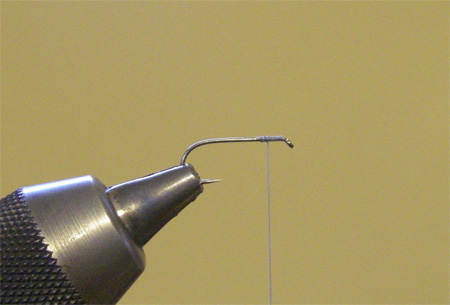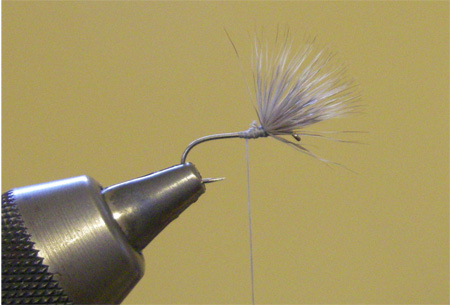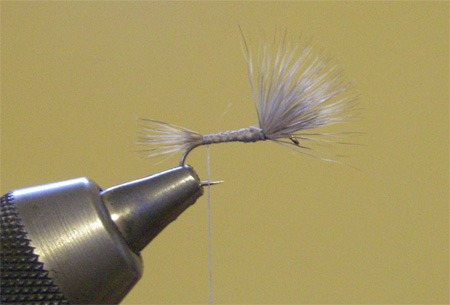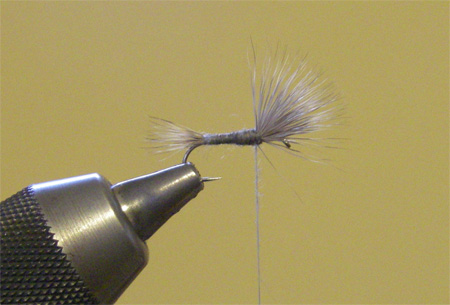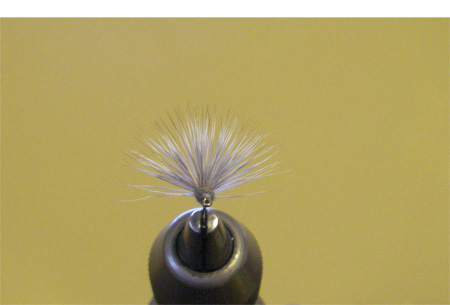The Haystack is one of our favorite fly patterns for spring mayfly hatches in the Smoky Mountains. We’re providing the tying instructions because this fly isn’t readily available in most fly shops or catalogs, even in the Smoky Mountain region. This fly is easily tied with materials found on virtually any fly tying desk. There is no hackle required. Even better, it floats extremely well in the rough water we see in the spring.
Tied as shown the Haystack is a superb imitation of the Quill Gordon. Change the size of the hook and the color of the dubbing and you can easily have a fly to imitate Hendricksons, March Browns, and Light Cahills.
The Haystack is really an old time fly, but it has spawned some incredibly effective fly patterns that are well known almost anywhere there are selective trout. The Comparadun and Sparkle Dun are both sparsely dressed, more popular derivatives of the Haystack. Another variation on this fly is the Usual, which is quite similar but uses hair from the foot of a snowshoe hare instead of elk or deer hair.
Materials
- Hook: Standard Dry Fly Hook #12-16
- Thread: 6/0 Thread to match color of body
- Wing: Fine Elk Hair or Deer Body Hair; Look for hair labeled as Comparadun Hair
- Tail: Same hair as the wing
- Body: Superfine or other dry fly dubbing
1. Position the thread about 1 1/2 hook eye lengths back from the eye of the hook.
2. Stack a clump of elk hair. Tie it in so the wing will be as tall as the hook is long. After tying in the hair securely clip the butts closely.
3. Wrap the thread to the rear of the hook and stack another clump of elk hair for the tail. This clump of hair should be about 1/4 – 1/2 the bulk of the clump used for the wing. Tie in the tail so it is about 1/2 the length of the shank of the hook.
Make the first few wraps loose, then tighten the wraps while wrapping forward to where the hair from the wing was clipped, then clip the butts of hair left from the tail. This step provides a smooth underbody to avoid a lumpy appearance when dubbing. The underbody of elk or deer hair also provides extra buoyancy.
Wrap the thread back to the rear of the hook where the tail was tied in.
4. Dub the body so it has a growing taper as you move toward the wing.
5. Pull the wing back and dub directly against the hair so the wing will stand up straight. Wrap back behind the wing with a few turns of dubbing then go in front of the wing and dub the head. Tightly wound dubbing should make the wing stand straight up.
6. Tie off the head with a series of half hitches or a whip finish.
7. You will have to shape the wing slightly by spreading the hair with your fingers. Give the wing a semi-circular appearance.
